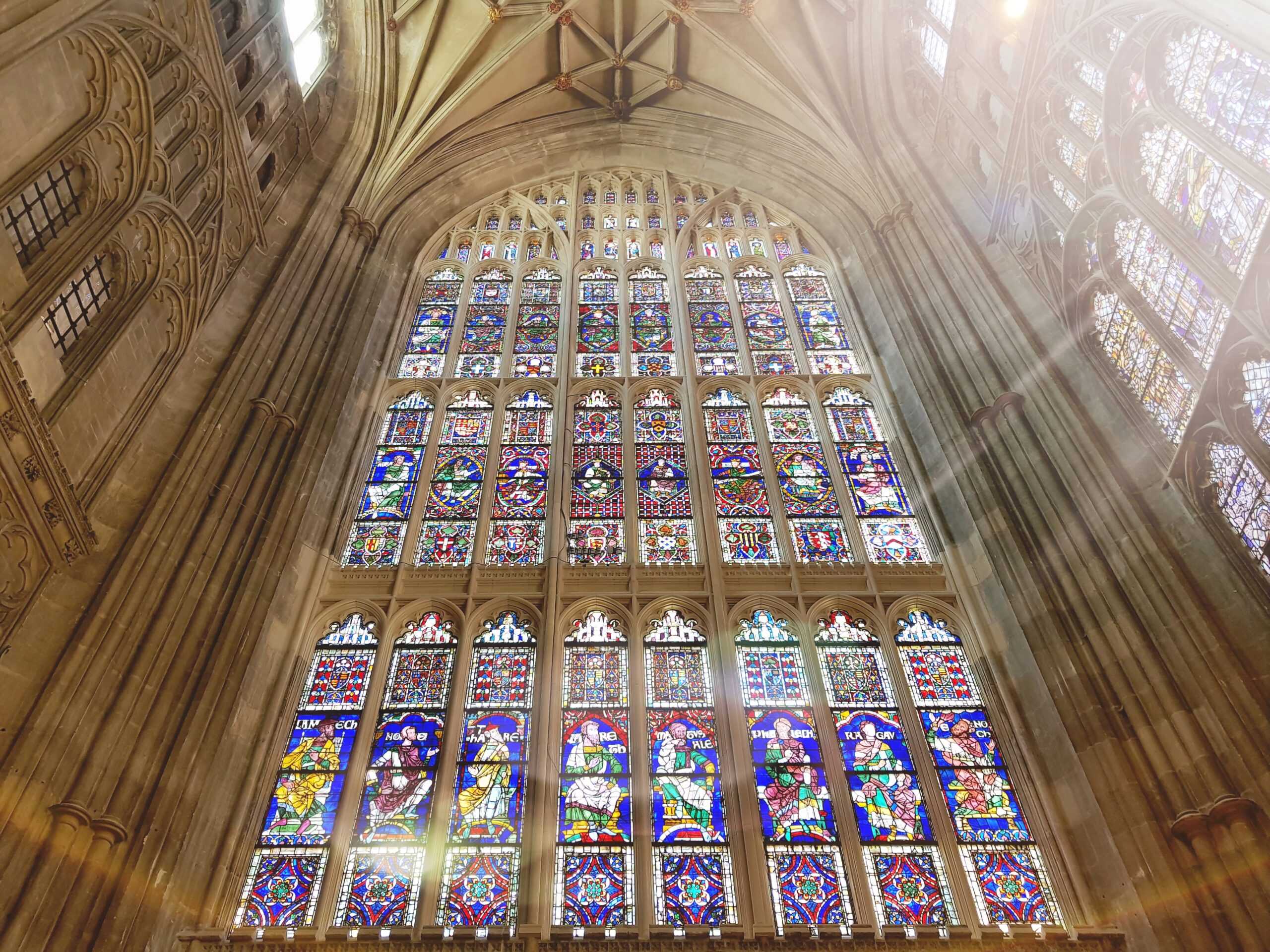How Did They Build That activity sheets
Click here to find a programme of curriculum linked classroom activities and resources to support the ‘How did they build that ’ resource.
Download activity sheetsMany of the windows of Canterbury Cathedral contain stained glass, in fact there is around 1200m2 of stained glass in the Cathedral as a whole. The oldest glass in the building dates from the twelfth century and is over 840 years old. These particular windows show the genealogies (family trees) of biblical figures.
Over the years, many of the original windows have been destroyed. Some were lost during the reformation and many more during the English Civil war.
In 1942, during World War II, Canterbury suffered heavy bombing. Much of the remaining medieval glass in The Cathedral only survived because it had been removed and stored in crates for safe keeping at the beginning of the war.
The windows of Canterbury Cathedral continue to bring colour and light to the building, helping to create a sense of awe and wonder. Even today, new windows continue to be created for the Cathedral and a team of conservators (someone responsible for the care and repair of objects or buildings of special interest) work hard to look after the beautiful glass and ensure it will still be here for people to enjoy in the future.
Imagine you are a medieval pilgrim coming to The Cathedral for the first time – how does the stained glass make you feel?
Stained glass windows are expensive and very time consuming to produce. In medieval times they helped to show that the Cathedral was a wealthy and important building.
Some people think that in the past stained glass helped to tell the bible stories when ordinary people could not read the bible for themselves. In Canterbury Cathedral, some of the Stained glass windows honour important individuals such as Kings, Queens and Saints. There is also a very famous series of windows that depict some of the miracles (an extraordinary event taken as a sign of the power of God) of Saint Thomas Becket.
The way we make stained glass windows is almost the same as it was in medieval times.
Click here to find a programme of curriculum linked classroom activities and resources to support the ‘How did they build that ’ resource.
Download activity sheets© Dean and Chapter of Canterbury Cathedral


